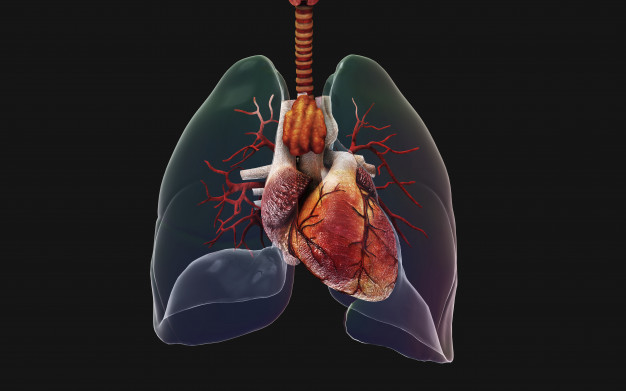In human beings, the air is inhaled into the body through the nostrils of the nose. The respiratory organ is present within the body and the organ is covered by a surface that is very fine and delicate and the exchange of oxygen and carbon dioxide takes place across the surface. The structure of the organ increases its surface area when it is in contact with the oxygen-rich atmosphere and some passages take air into an organ. There is a mechanism for moving air in and air out.
To know the difference between aerobic and anaerobic respiration, one must first learn what it infers. Thus, aerobic implies the presence of oxygen while anaerobic implies the absence of oxygen. Hence, the essences clear things up a little. Similarly, you correlate the extent and find out that aerobic respiration occurs in the presence of oxygen. On the other hand, anaerobic respiration is when respiration occurs in the absence of oxygen.

Thus, respiration defines the chemical reaction which includes the breakdown of the nutrient molecule to produce energy. Moreover, it exists in the mitochondria or the cytoplasm of the cell in an aerobic manner or anaerobic manner.
Types of Respiration
There are two different types of respiration. They are:
Aerobic Respiration
Anaerobic Respiration
Definition of Aerobic Respiration
The process of reactions catalyzed by enzymes is called aerobic respiration. Also, this mechanism comprises the transfer of electrons from the molecules that perform as the source of fuel like glucose to oxygen. Further, it works as the final electron acceptor.
Definition of Anaerobic Respiration
The main difference between aerobic and anaerobic respiration refers to the involvement of oxygen when the provided resources like glucose are recycled into energy. Also, this system has been developed by some bacteria in which it generates use of oxygen-containing salts rather than free oxygen as the electron acceptor.
Besides, anaerobic respiration generates energy which is useful at the time of high energy pressure in tissues. Thus, the oxygen which aerobic respiration generates is not able to confront the demand.
| Aerobic Respiration | Anaerobic Respiration |
| Aerobic respiration is a process of a set of metabolic reactions that occurs in the presence of oxygen, transpiring in a cell to transform chemical energy into ATPs. | Anaerobic respiration is a procedure of cellular respiration that occurs in the absence of oxygen. In this process, the high-energy electron acceptor is neither oxygen nor pyruvate products. |
| The general equation of aerobic respiration is: C6H12O6 + 6O2 → 6CO2 + 6H2O + energy | The general equation of anaerobic respiration is: C6H12O6 → C2H5OH + CO2 + energy |
| It occurs in the presence of oxygen. | It occurs in the absence of oxygen. |
| A high amount of energy is generated. | A low amount of energy is generated. |
| It exists in the mitochondria and the cytoplasm of prokaryotes. | It occurs only in the cytoplasm of a cell. |
| The final product produced during aerobic respiration is 37 ATP. | The final product produced during anaerobic respiration is 2 ATP. |
| It needs oxygen and glucose to produce energy. | It doesn’t need oxygen but takes up glucose for producing energy. |
| Carbohydrates and oxygen are the requirements of aerobic respiration. | Some other electron acceptors like sulfur and nitrogen are needed along with the carbohydrates. |
| Complete oxidation of carbohydrates occurs during aerobic respiration. | Incomplete oxidation of carbohydrates occurs during anaerobic respiration. |
| Aerobic respiration is longer than anaerobic respiration. | Anaerobic respiration is shorter than aerobic respiration. |
| Aerobic respiration transpires in most of the higher organisms like plants and animals. | Anaerobic respiration transpires in primitive prokaryotes. Anaerobic respiration also occurs in the muscle cells in humans during extreme movements. |
Conclusion
We discussed all the things related to respiration and the major differences between aerobic and anaerobic respiration. If you find this article helpful, then, please do share it with your friends, and don’t forget to comment your views in the comment section.





